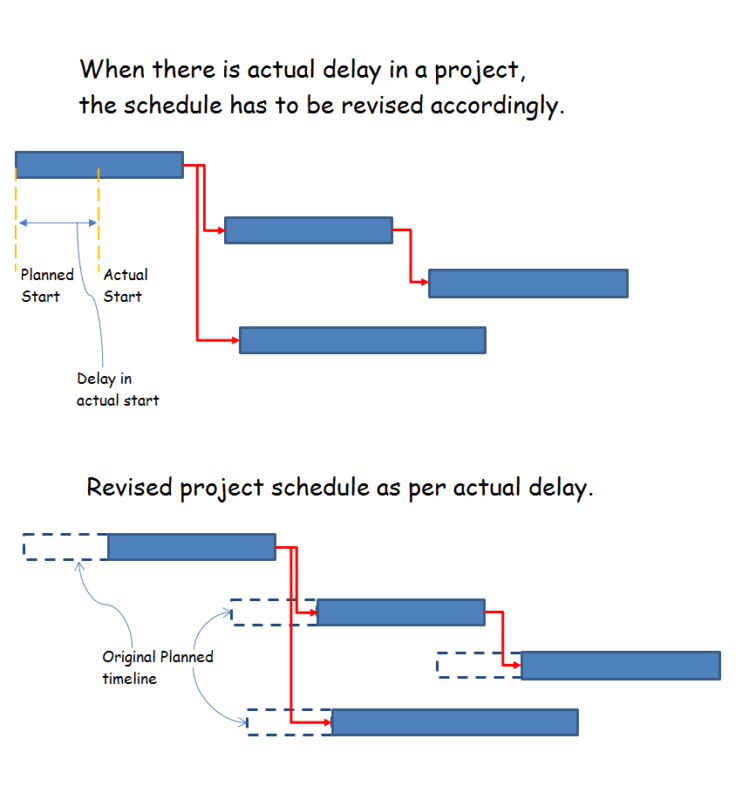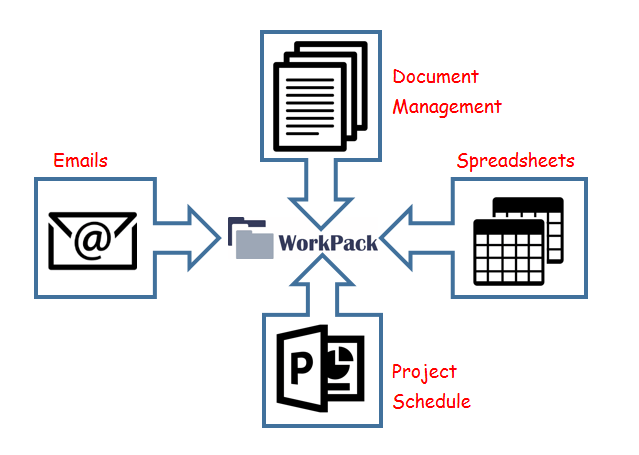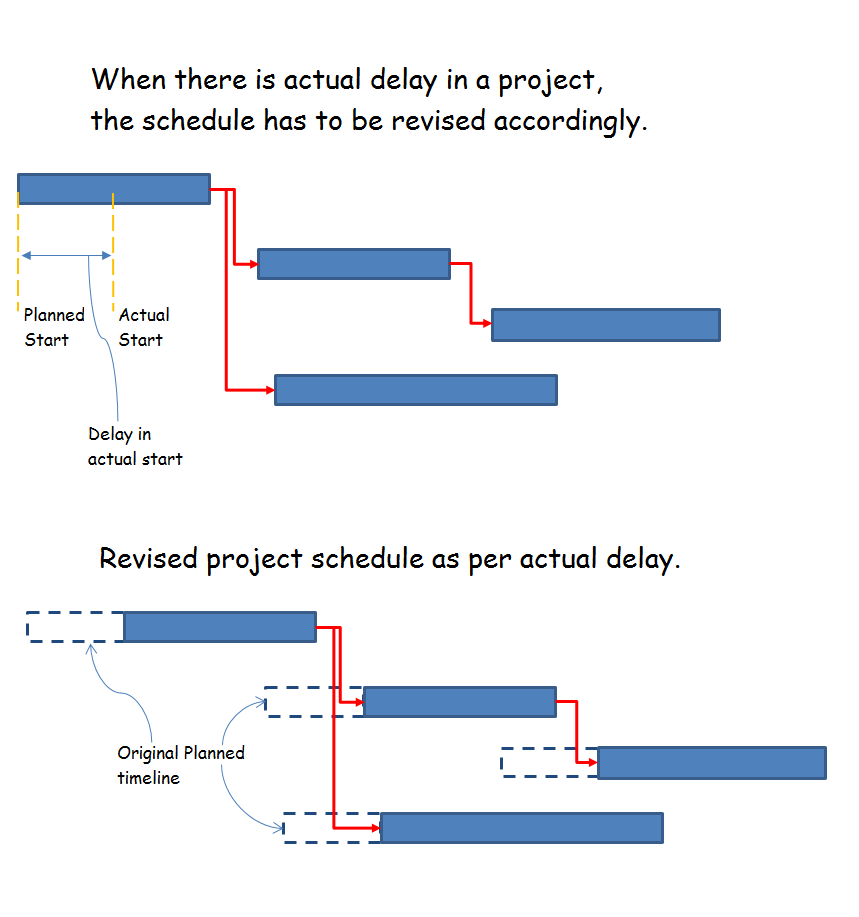Engineering & Construction projects are inherently complex, involving a variety of stakeholders – Project Developer, Contractors, Architects, Consultants, Government Authorities, Auditors etc.
Managing such complex project requires substantial groundwork before even commencing the project. Creating a project plan is an essential part of this groundwork ahead of starting a project.
Generally, project planning refers to the creation of a project schedule and identification of critical activities and milestones.
Importance of project schedule
The main purpose behind creating a project schedule is to draw a timeline for all important project activities.
Having a definite timeline in front of each project activity provides a very clear idea of what your team needs to do and when.
Project schedule also helps in identifying critical activities and milestones. You can think of critical activities as choke points or bottlenecks for the overall project timeline. If these activities get delayed, you run a risk of delaying the whole project.
Graphical representation of timelines, critical activities, important milestones, dependency relationships etc. in the form of a Gantt chart helps the project manager to effectively visualize how the project is going to progress through its planned lifetime.
Where project schedule is useful
A project schedule is especially important for complex projects.
A project manager needs to plan and be prepared for –
- When his team needs to work on different activities
- When different material items, equipment are going to be needed on site
- Which important milestones are linked to payments and when they will be completed
A project schedule will shed light on all these important questions.
Moreover, these questions become increasingly more difficult to answer with growing complexity of a project. But a carefully created schedule will definitely answer them with decent accuracy.
So in general, a project schedule is used when PREPARING for a project.
But when you actually start working on a project, the actual timelines vary widely from the planned schedule.
And when that happens, the project schedule has little significance for forecasting how the project is going to progress further.
Where project schedule is lacking
It is rare that a project runs exactly as per its planned schedule.
A number of factors come into play when the actual project work starts. Some of them may be beyond a project manager’s control, for example – land availability, regulatory approvals etc.
Usually, such external factors delay the start of a project.
Furthermore, there are also delays from other manageable factors like resource availability, unexpected challenges etc.
These delays will tend to accumulate and in such cases, the original schedule is not of much use.
You can no longer use the same schedule to effectively forecast activity timelines, resource requirements, milestone payments etc.
Alternatively, you need to revise that schedule to account for delays that have already occurred and the actual rate of doing work (instead of the expected rate of work in the original schedule).

For effectively creating a forecast schedule based on actual progress, you will first need detailed and accurate data of the actual progress of different activities and the actual rate of work for those tasks.
But this is where the traditional scheduling tools are found to be lacking.
Traditional scheduling tools used by project planners are seldom accessible to the ground level project team members – engineers, buyers, construction supervisors, store managers etc.
So there is an information gap between the actual work done by different project team members and capturing that work on the project schedule.
A project manager or project engineer has to manually bridge that gap by noting progress updates from each team member and then punching those numbers in the scheduling tools.
But since it takes so many efforts, it’s not done frequently. Hence the project schedule is not an accurate reflection of what is happening in a project and when the remainder of work is going to be done.
How to bridge these gaps
The problem is that a project schedule created with traditional scheduling tools like MS Projects or Primavera cannot directly connect with the actual work being done by the infra project team.
On the other hand, work done by different project team members is captured on different platforms –
| Work done by | Captured in the form of | Stored on |
| Design Engineers | Drawings, Documents, Datasheets, 3D Models, BOQ | Shared Drive |
| Procurement Team | RFQ, PO documents | Shared Drive |
| Budget Vs Cost Tracking Sheet | Spreadsheets | |
| Emails to vendors | Email Server | |
| Store Managers | Material Receipts, Challan | Shared Drive |
| Inventory/material tracking spreadsheet | Spreadsheets | |
| Construction Supervisors | Daily Progress Reports | Spreadsheets |
| Site Photographs | Shared Drive | |
| Email Updates | Email Server |
The overall picture suggests that a bulk of the work done in an infra project is captured and stored on three platforms –
- Document files in shared drive
- Emails exchanged with the team
- Different spreadsheets
So if you can connect these three platforms with the project schedule, you can actually bridge the information gap to track actual work done against project schedule.
How WorkPack can help
WorkPack is a project and document management platform built around the work practices of engineering & construction (E&C) infra projects.
WorkPack platform connects the project schedule with documents & drawings, spreadsheets and emails.

As an integrated platform, WorkPack has enabled infra project managers from different industries to effectively monitor their project progress on a single dashboard.
Integration of actual work tracking with the scheduling module eliminates the need for the project manager to manually update all progress numbers in the project schedule.
Automated progress reporting also means that actual progress is updated in the schedule in real time.
Furthermore, WorkPack uses tracking of actual progress and actual rate of progress (achieved progress/time taken) as correction factors to produce a forecast timeline for different activities.
So whenever you visit the Gantt chart of a project in WorkPack, you will be able to –
- Check the actual timelines of different activities and spot delays
- See the revised project schedule as per the actual progress
- Effectively forecast when important project milestones can be completed
- Not spend any time in manually updating actual progress in the schedule
This is bound to make your project schedule more useful and valuable than just a reference point.
But you don’t need to just take our word for it. You can check it out for yourself by setting up a free account for your team.
Let us know if you need any help to set up this free account or you would like to schedule an online demo for your infra project team.


2 Comments
Rajan Jain
April 15, 2018
Needless to say Project Planning and continuous monitoring is essential for proper execution of any project.All tools are good but the ability of the PM is to evaluate the various reports and bring the project back on track.
Any project which has multiple critical paths is bound to fail and the PM has to determine and balance delays with cost over run.
Sagar Raut
April 16, 2018
Construction projects are destined to encounter delays during execution of work. Crux of the Project Management team is to record all such events and quantify them to client. Communicate it to the PMC and client frequently. Show them how much time and cost impact it has on project completion. Focus on claims.
Delaying the project is not offence and never considered a failure unless claimed such extended time with proper substantiation to client.